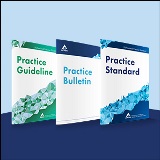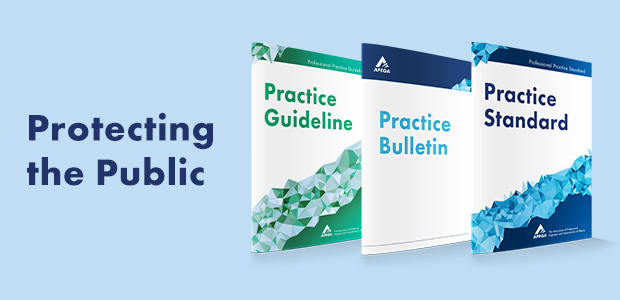On the Origin of Standards

As an APEGA registrant, you know and follow APEGA’s practice standards, bulletins, and guidelines.
Have you ever wondered how these progress from an identified need through development and eventually to publication and enforcement? They take a great amount of participation from registrants like you!
Principles of selection
Standards begin with data. The Professional Practice Standards team at APEGA—currently comprising a materials engineer, a geophysicist, and a chemical engineer with a combined 54 years working in industry—tracks questions and comments received from registrants. The team uses that data to determine when guidance is needed and what form it will take: standard, bulletin, guideline, or amendment to an existing document.
- Standards set the minimum mandatory standard of practice and are enforceable.
- Bulletins provide clarity on specific subjects and remain in force until they are repealed.
- Guidelines provide best practice recommendations. Although they are not enforceable, guidelines may be used by APEGA’s statutory boards to assess practice and conduct.
Complex development
When the data show a new practice standard is needed, the Professional Practice Standards team initiates the development process with the Practice Review Board (PRB). The PRB adds the standard to the priority list of the Practice Standards Subcommittee, which supports APEGA staff in recruiting a volunteer panel of subject matter experts with the knowledge and experience to develop a standard that will apply to all registrants.
At just the start of the process, dozens of person-hours from registrants with decades of experience have already been dedicated to the standard’s development.
What happens next is hundreds of hours of consultation, writing, and revising. APEGA holds a public engagement phase to solicit feedback from registrants and, where appropriate, incorporates it into the standard. When the revisions are complete, the Professional Practice Standards team brings the standard to Council for approval, then it is published to APEGA’s website. APEGA informs registrants when the standard comes into effect and when it becomes enforceable.

Individual differences
Bulletins and guidelines follow a similar path to publication as standards, with some key differences.
Because a bulletin focuses on a specific aspect of practice, it is usually shorter than standards and guidelines. Its development is also less complex, with fewer consultation and review phases and no public engagement phase.
Like standards, guidelines cover broad topics related to professional practice, and therefore subject matter experts are recruited to share their knowledge during the many required rounds of writing and revision. However, guidelines do not need Council approval and they do not become enforceable after publication.
Evolution of public safety
Just as technology, techniques, and society are constantly evolving, so too must the documents that ensure licensed professionals are upholding the highest standards of practice. All standards, bulletins, and guidelines are scheduled for review, generally on a three-year cycle.
These documents—developed by licensed professionals for their peers—all have the same goal: to uphold APEGA’s mandate to protect the public interest. By ensuring all practising professionals adhere to the highest standards, APEGA keeps Albertans safe, maintains the accountability of the professions, and supports the future growth and success of our province.
Learn more and get involved
- Read APEGA's practice standards, bulletins, and guidelines.
- View current volunteer opportunities.
- If you have questions about APEGA’s practice documents, email [email protected]
In this article
- The Practice Review Board (PRB) comprises at least four professional members and one public member (in 2023, there are 11 members). The PRB is a statutory board responsible for developing and maintaining professional practice documents, evaluating the professional practice and competence of registrants, and administering the Continuing Professional Development Program.
- The Practice Standards Subcommittee (PSSC) comprises at least five professional members (in 2023, there are seven members) and oversees the creation and maintenance of practice standards, bulletins, and guidelines. Through assessment and evaluation, the PSSC ensures these publications clearly define the professional obligations of practising registrants.
- A subject matter expert panel is convened when a new standard or guideline is being developed. Each panel comprises up to 10 members with a diversity of qualifications and experience, and they meet as often as once every two weeks to work on the document under development.
